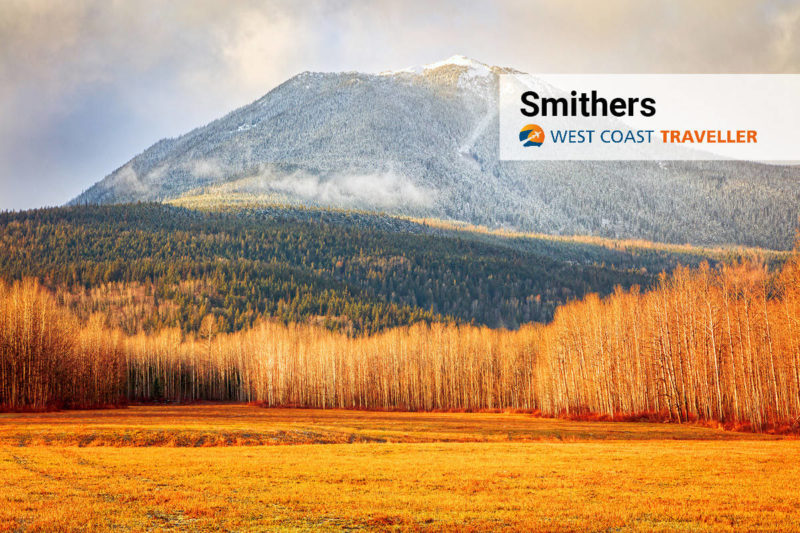Smithers adopted an “alpine theme” in the 1970s. Main Street was adorned with alpine-style rooflines, red brick sidewalks and a wood sculpture called Alpine Al, who plays the alphorn! Alpine Al has made his way into the hearts of many Smithereens, becoming the guardian of Main Street, and the town’s official mascot.
The current statue, erected in 2016, is seven feet tall, carved from 1,000-year-old red cedar by chainsaw. In recent years, Alpine Al has come to life in various animations on the TourismSmithers.com website.
The Bulkley Valley is the traditional territory of the Wet’suwet’en, who have lived here for countless generations and whose rich culture is seen and heard throughout the valley. When the first Europeans arrived in the mid-1800s, they did so to satisfy Europe’s appetite for fur. Trappers and traders first arrived by trekking overland and using the area’s river systems to access what they believed to be the untapped fur resources of the new colony of British Columbia.
The story of the town of Smithers begins in 1913 with the arrival of the railroad. The federal government was eager to extend its trade and transportation routes across the continent, and plans were well underway for a railway that would extend from Manitoba in the east to the current city of Prince Rupert on the west coast. In 1913, after two unsuccessful attempts to establish its divisional point between Prince George and Prince Rupert, the Grand Trunk Pacific Railway turned its attention to the unassuming bit of swampy land below the towering Hudson Bay Mountain. Named for the highest official of the GTPR, Sir Alfred Smithers, the town immediately began to grow.
Heritage buildings such as the train station and the Central Park Building are just a few of the interesting stops you’ll make on the Museum’s Culture Crawl, a self-guided walking tour, that will lead you through the streets of Smithers to some of our historic buildings and landmarks.
Facts
• Moricetown Canyon, with its rush of the river as it squeezes through the gorge, is mesmerizing! Watching the fisherman as they try their hand at catching salmon out on the rocks is exhilarating.
• The Wet’suwet’en art around town can be seen at the local government office on First Avenue, Bovil Square on Main Street and on an amazing totem pole at the Northwest Community College on Second Avenue.
• The Widzin Kwah Canyon House Museum features displays of traditional life, fishing methods, cultural artifacts, local arts and crafts and a gift shop.
• The Wet’suwet’en cultural tours help earn your appreciation of the Wet’suwet’en way of life.
• Interested in fishing? Try the waters at Idiot Rock in Moricetown just downstream of the canyon.
Smithers summers are comfortable and mostly cloudy, while winters are freezing, snowy and overcast.
Destination BC is developing a new campaign to promote hyper-local travel where residents are “tourists-in-their own hometown,” while practising the COVID-19 safety protocols as recommended by the B.C. Provincial Health Officer. Many B.C. parks are now open, and national parks were to open as of June 1.
(Check this website for current details on travel.)
Getting Here
Driving: Travel time from Vancouver to Smithers is 13 hours via BC-97 N & BC-16 W. The distance is 1,147.4 km (443 mi).
Map











 Leslieville: A tiny hamlet with a beautiful stream
Leslieville: A tiny hamlet with a beautiful stream